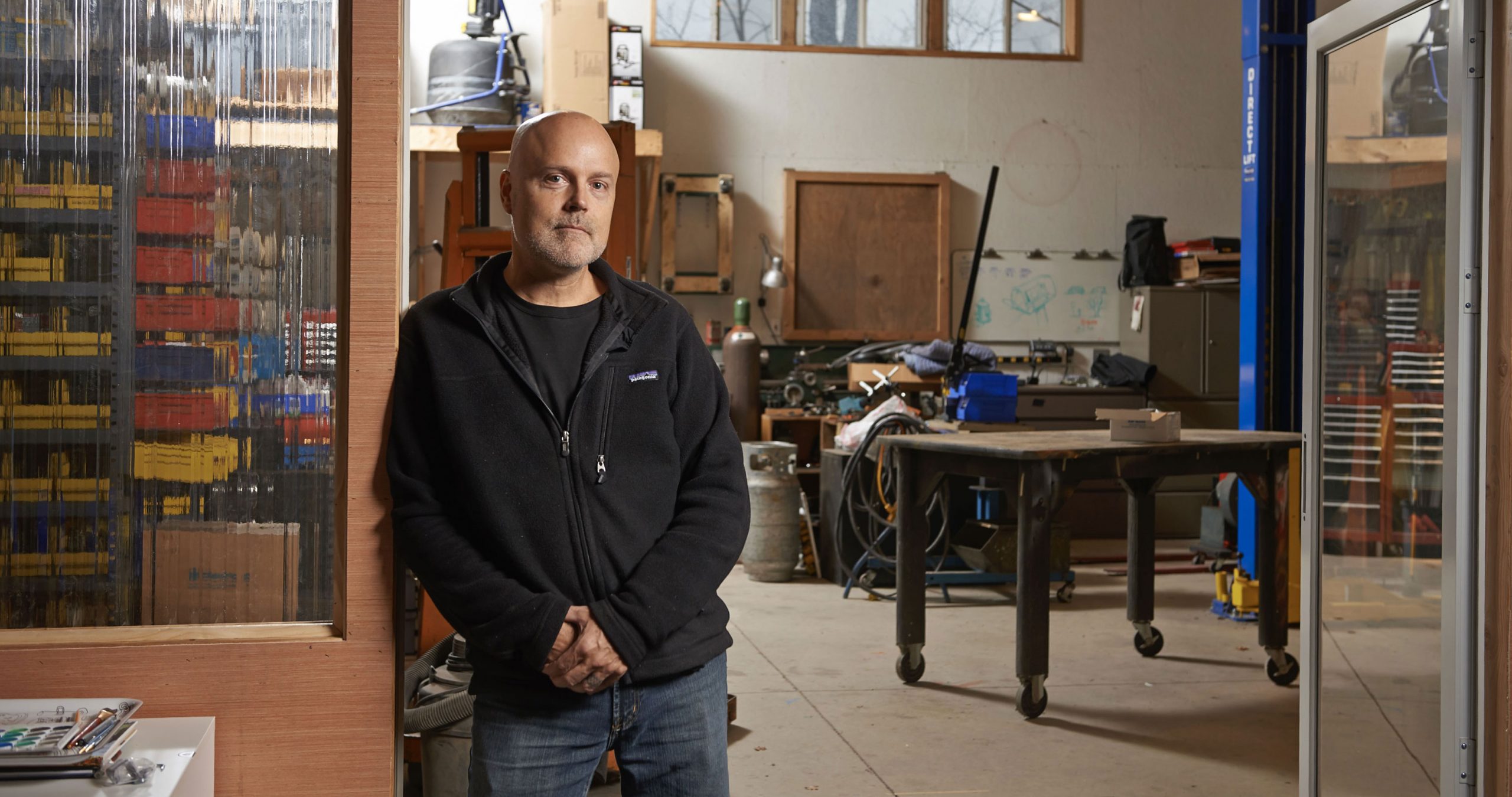Copyright © 2025 Motivate Media Group. All rights reserved.
Work from home: Brian Alexander shares lessons learnt since 1998
Having worked from home since 1998, Brian Alexander shares lessons for anyone struggling to work in isolation

Office furniture brand Herman Miller has teamed up leading designers and architects to create an interview series with a focus on self-isolation and working from home, exclusively published in the Middle East by Identity. From tips on productivity to creative processes and what to expect of the future, these designers share their current realities under lockdown.
In its second edition of the series, industrial designer Brian Alexander, who is a thoughtful observer of human behaviour and someone who been working from home since 1998 – the year he founded his studio – shares tips on how to make the best out of the experience.
His natural inclination to watch, hypothesize, test, and reassess has led him to iterate on his own work-from-home patterns and places over the years. His thoughts on how to maintain creative flow and collaborate while working from home hold lessons for anyone struggling to work in isolation.
Here are Brian Alexander’s tips on working from home:
Start with Stillness
Objectively do an internal inventory of your work-life up to this moment. The point of this is not to make a to-do list, but to get your bearings and center yourself. It’s up to each of us to sort our own paths. But we can’t do that if we don’t know our own triggers or have a general portrait of our work lives.
Practice Contextual Displacement
For many, home is the “off” button for work. You are surrounded by all the objects and cues which represent downtime or other activities which normally counter work life. A general sense of fatigue and frustration builds because the experiential cues of home haunt you. It’s a little like mixing complementary colours. If you maintain some separation it can be a powerful addition. If you mix too much, everything goes grey.
Designate a Workspace
If you already had a home office, you’re good to go. If not, designate one. However minimal or grand, lay claim to a spot in which you feel you can do your best work. Maintain that location for that purpose. When you leave that location, you are no longer at work. Don’t underestimate the power of closing a door or throwing a sheet over your desk to suddenly feel at home again.
Reference Existing Patterns
Whatever your previous work experience was, try adopting the associated behaviours and routines from being at the office. For many, the start of the day is more critical than the end. Wake up at a consistent time. Follow the same pattern you usually do to prepare for work, but introduce a few new minor variations. Make some coffee, walk around the block, come back, go to your work spot, and proceed with your day. These patterns can function as primers to get you in the frame of mind most beneficial to work.
Mind Your Relationships
Years ago, you probably had a shot of your family vacation pinned up in your cubicle. Now the same imagery is your wallpaper or desktop background. When you close an app or start a meeting, there’s a little bit of you-ness exposed at that moment. We appreciate that as fellow humans. So stay connected in whatever form you can.
Photo: Brian Alexander
The Latest
Design Take: Inside the Royal Suite at Jumeirah Al Naseem
With sweeping views of the ocean and Burj Al Arab, this two bedroom royal suite offers a lush stay.
Elevated Living
Designed by La Bottega Interiors, this penthouse at the Delano Dubai echoes soft minimalism
Quiet Luxury
Studio SuCo transforms a villa in Dubailand into a refined home
Contrasting Textures
Located in Al Barari and designed by BONE Studio, this home provides both openness and intimacy through the unique use of materials
Stillness, Form and Function
Yasmin Farahmandy of Y Design Interior has designed a home for a creative from the film industry
From Private to Public
How ELE Interior is reshaping hospitality and commercial spaces around the world – while staying unmistakably itself
A collaborative design journey
A Life By Design (ALBD) Group and Condor Developers have collaborated on some standout spaces in Dubai
New Episode: In Design With: Ahmed Bukhash
Watch the latest episode on In Design With.
Highlights of the Biennale Architettura 2025
We shine a light on the pavilions from the Arab world at the Venice Architecture Biennale, on display until Sunday 23 November 2025
Read ‘Bold Design’ – Note from the editor – July/August 2025
Read identity magazine's July/August 2025 edition on ISSUU or grab your copy at the newsstands.
Things to Covet
Elevate your spaces with a pop of colour through these unique pieces
Designing Spaces with Purpose and Passion
We interview Andrea Savage from A Life By Design – Living & Branding on creating aesthetically beautiful and deeply functional spaces
















